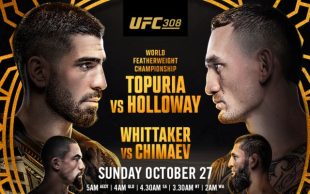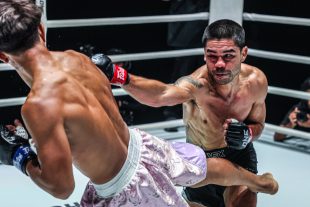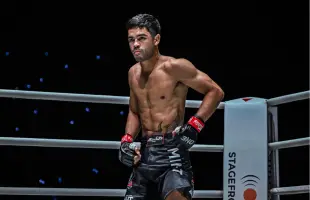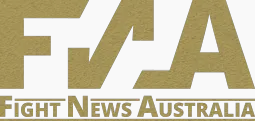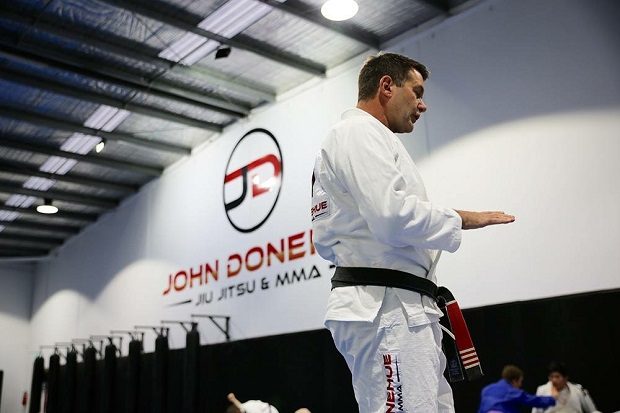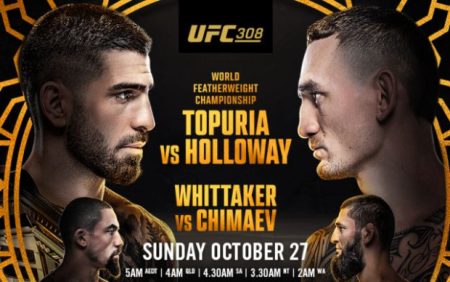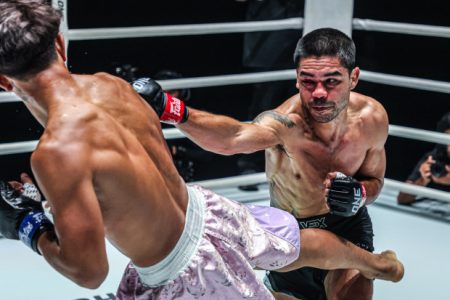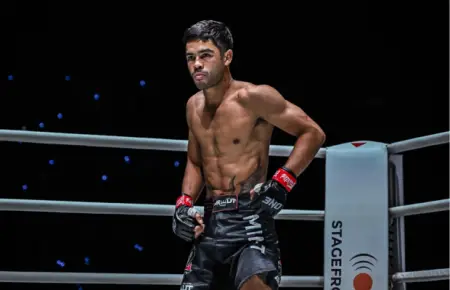If you ask Coach John Donehue how he ended up teaching, training, and coaching, some of the most distinguished martial artists of this era, he will put it down to being in the right place at the right time. If you ask anyone who knows John personally, you will hear a vastly different tale. As far as luck goes, it may have had something to do with it. However, when you consider just how many people have been lucky enough to be in the presence of Bill Wallace, Benny Urquidez, Randy Couture, Rico Chiapparelli, Dan Henderson, Frank Trigg, Gene LeBell, Rigan Machado, or Dan Inosanto, the number would be relatively high. If you then ponder how many of those people have been invited to teach, train with, or coach all of these exceptionally influential men, that number becomes incredibly low.
In the realm in which Coach Donehue thrives, the world of real combat, true respect is rarely earned. Yet, Coach Donehue remains not only highly respected, but also trusted, and endeared by some of the most notable warriors of this epoch.
He is a tackling coach to professional NRL team the Melbourne Storm, and many AFL teams respectively. As one of only five black belts on Earth under Gene LeBell, John Donehue is an especially rare breed, and amongst Australians, he is in a league of his own.
Therefore; if I believed John’s humble narrative of merely being in the right place at the right time, I would promptly inquire as to why he hasn’t also won division one Tattslotto, Powerball, and every single car raffle in every single shopping centre simultaneously, because if his anecdote were true, that would make him the luckiest man on earth.
John is a reclusive type, he is old school, and in a modern, social media filled world, peppered with selfies and boastful online posts, he doesn’t use Facebook or Instagram, nor does he engage in much self-promotion. If you ask anyone that has trained with him, they will tell you that his blend of Jiu-Jitsu, Catch Wrestling, Greco, Freestyle, and Judo, is not only extremely effective, but also particularly brutal.
On the mat, Coach Donehue is uniquely skilled, unimaginably tough, and incredibly effective. When I sat down with him off the mat, for this rare and exclusive interview, John was kind in his demeanour, generous with his time, humble in his perspective, and amazingly insightful.
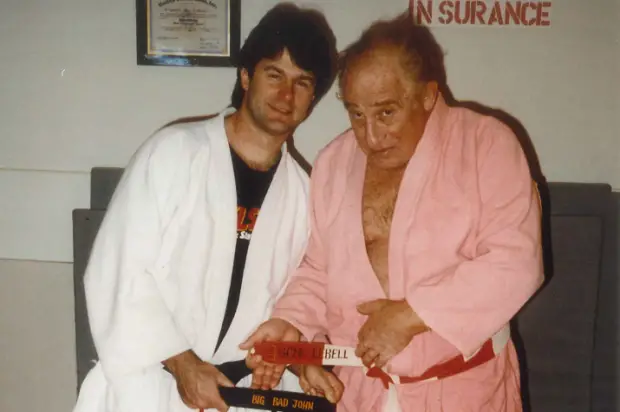
INTRODUCTION:
FNA: We’re sitting inside your club, John Donehue JiuJitsu and MMA. You’ve had this place for nearly three years now, does it feel like home yet?
JD: It’s starting to feel that way, I guess because of the core group of students that we’ve got and the culture of the place, it feels like it’s a pleasure to walk in to. So from that point of view, yeah that part does definitely feels like home, everyone’s keen to learn, everyone wants the same thing, everyone is here to help each other, so from that perspective, yeah definitely.
FNA: You are a black belt in Jiu-Jitsu under Rigan Machado, and one of five black belts in the world under the legendary, Gene LeBell. Gene is well renowned for a brutal style of training. How’s your body holding up these days?
JD: I mean it’s holding up, there’s certain things that you have to be careful of, you know, you still want to train like a twenty-five year old, but you realize you’re not. Especially at night when you go home, or the next day. You know, I’ve had a few surgeries over the years and probably a few more to come, but it doesn’t take away from the love of what you do and why you want to do it, or the desire to still want to roll every night. You have to pick and choose who you roll with, and how you roll, and so on, you’ve got to be smart with what you do.
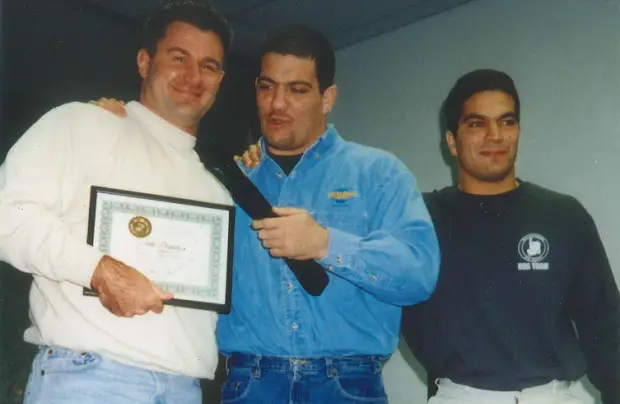
FNA: How many surgeries have you had?
JD: I don’t know, twelve, maybe thirteen, and another couple coming up so I’ve definitely made some house payments for some surgeons around Melbourne.
FNA: Do you think it’s possible to train with Gene LeBell for a long period of time, and be pain free later in life?
JD: No, not at all. I remember one of the first times I trained with Gene, it was at Benny “The Jet” Urquidez’s gym. Back then I had pretty flexible joints and I remember Gene did a V lock on me, my arm just kept going and I didn’t really feel it, then there was three or four snapping sounds. I tapped and he let it go, I said I was fine. I felt it a bit, but at the time it was no big deal, then I remember the day after I was flying to Vegas, and I had to hold my arm through the whole flight because I was in so much pain. It probably took me three or four months to recover from that. That wasn’t Gene being mean or anything, he took the slack out, my arm was pretty slack at that stage, through my own ignorance I didn’t know when to tap. Lessons like that were pretty important.
FNA: How often do you get over to the U.S these days? Do you catch up with those guys often?
JD: Oh probably not as often as I’d like, I used to go over maybe once every year and catch up with a select few. Some have sort of fallen off the training map, a lot of people now I don’t even know. I still stay in touch with Rico (Chiapparelli), Randy (Couture), Frank Trigg, those sort of guys, because they were important in my development and they’re just good people, and they’re so good at what they do. I think the last time or the time before I caught up with Rigan (Machado) for lunch. But you know, it’s really more about the students here for me now.
Personal Story:
FNA: Where were you born and raised?
JD: I was born in Brisbane, but moved all over when I was young, eventually we settled on Melbourne. Then I left and travelled overseas for a little bit, spent some time in Asia, then went to L.A. My original grand plan was to travel all around the world. That stopped in L.A when I ran out of money. I was training primarily in Boxing and Kickboxing at that stage.
FNA: In Melbourne?
JD: Yeah in Melbourne, I was working in bars and pubs, we were doing rudimentary chokes and things like that. We were probably pretty bad at it compared to now that I actually know how to do it properly. So yeah, I ended up living Los Angeles for around ten years and moved back here to start a school.
FNA: What drew you to the martial arts, initially?
JD: Probably like a lot of people of my generation I guess, we used to love going to the movies and seeing Bruce Lee. You know one of the first things that I did after boxing, when I was young, was Kung Fu. It was a really hard style, I know that probably sounds weird when I’m talking about Kung Fu. The guy that I found was actually cooking in a Chinese restaurant of all places, I’d heard from some people that were in martial arts that he was really good, really tough, but didn’t really teach anyone. I actually took me three months of going into the restaurant, back in the kitchen, trying to convince him to get him to teach me. A few other people around that time knew of him, Richard Norton I think maybe did some training with him. I think Bob Jones knew of him and so on, but he was a bit more reclusive. So that’s how I started with the Martial Arts side of things, I was doing boxing before that. I’d travel on the train from Mentone back to Kananook station, jump off at Chelsea on the way home and box with a guy called Frank Kenny, who passed away quite a while ago.
FNA: Were you instantly addicted and passionate about training? Or did the interest grow slowly?
JD: Every sport that I did or anything I did physically, I was always pretty intense with and wanted to be the best at, so that was no different. I really applied my self to that.
FNA: How many martial arts have you studied, in total? What are your official ranks within them?
JD: I can’t even remember what sash or belt I would’ve been in Kung Fu, Black something, I got my black belt in Judo under Gene, and also a black belt from Gene in his own grappling system. In Jiu-Jitsu I’m a 5th degree, still haven’t put that last stripe on. I used to train a lot with the old school Zen Do Kai guys who were around in that original era under Bob (Jones), not so much the tradition Karate side but more the sparring. We used to work in pubs together.
FNA: How did you meet Gene LeBell?
JD: I’d heard of Gene through Bill Wallace, I met Bill because I had called up years before, after seeing an ad for seminars in Black Belt magazine. I thought how cool would it be to get someone like Bill “Superfoot” Wallace out here to do seminars, I think I was about eighteen at the time. I called the number in the magazine, a woman answered, and I said “Hi I’m inquiring about Bill Wallace seminars out in Australia” she said “Hang on a second”, then a male voice jumped on and said “Hi this is Bill” and I just froze. We got to talking and anyway, I brought Bill out for seminars and took him on a circuit around the country. I became really close with Bill during that period. Then later on when somebody else brought him out they ended up running out of money half way through the tour, so I jumped in to help save it, that’s originally how I met Cameron Quinn, he helped coordinate the Brisbane leg of the tour. But anyway, Bill is the first one that ever spoke to me about Gene, I had also met Benny “The Jet” Urquidez on a seminar tour here, he’d mentioned Gene, and they both said that he was the toughest man alive. They used to tell me that they would put their house, their money, their cars, their wives, on a bet for Gene to beat anyone in a fight. This was coming from some formidable guys, with honest reputations.
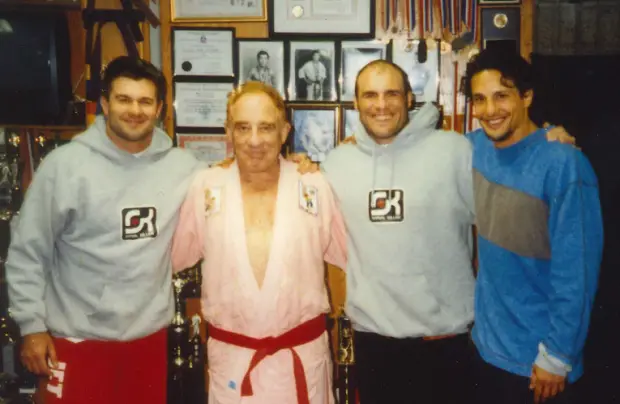
FNA: So those guys made the introduction?
JD: Yeah so, when I got to L.A, Bill put me up in a house with a friend of his, I would train with him pretty much every day at the Jet Center, he’d pick me up, we’d go to Benny’s place and we’d train just him and I. I think I’d seen Gene at Benny’s before that, I think he came down and taught an impromptu class, I had kind of looked over and wondered who this guy was. He came in with this old brown suitcase that he kept his gi in. Then Bill took me to L.A City College one night where Gene taught Judo, and it was just strictly Judo at that stage.
Gene shook my hand, I remember he had the softest handshake. He said hi to me, then he just said “Choke me”. I was young, and probably arrogant and stupid, my ego was probably you know, out of control, because I thought I was this tough boxing/kickboxing guy from Australia and so on. I looked at him and said “What do you mean?” and he made the gesture of putting hands around your neck. So I put my hands around his big thick neck and started squeezing, I thought I better not squeeze too hard, this guys a bit older and I don’t want to hurt him. He looked at me and said “You squeeze like a girl”
I thought; you old bastard. So I got my two thumbs and dug them right into the soft spot of his throat. I squeezed his neck as hard as I possibly could and his expression didn’t change, he just looked at me and said “Yeah you’ve got a pretty good grip”. Right then I thought; wow I’ve got to learn some of this stuff. I jumped on the mat and my first match was against a brown belt, and I was lucky enough to grab him around the neck and sort of hip toss him like you would at school against one of your mates. Then Gene put me up against someone that was obviously a good brown belt, who proceeded to throw me onto my head pretty hard. My first reaction was to stick my thumb in his eye, because when I was training with guys back here (in Australia) we would always train that way. Gene said “You can’t do that, it’s illegal in Judo. I love it, but you can’t do it”. I was lucky enough to be around some really good Judo people like Hayward Nishioka, I would go there every week and get my ass handed to me.
FNA: We often hear stories of the Legend that is Gene LeBell, he has been called the “Godfather of Grappling”, and the “Toughest Man Alive”, so I want to ask you, as a man that knows him very well both on and off the mats, how tough is he?
JD: With Gene it’s hard to imagine what he would have been like when he was younger because even when he was older, he was definitely scary and formidable. But he is also one of the kindest people that you could ever meet if you’re close to him.
FNA: So your grappling journey started with Gene, then moved onto the Machado brothers from there?
JD: Yeah, after training with Gene for a little bit, he invited me up to his cabin up in Frazier Park, where he had a Dojo built into his house. He would go up on the weekends and hang out with stunt people and friends who lived up there, they’d ride dirt bikes all weekend and practice their stunt stuff. And on Saturday nights he would have an impromptu class for who ever he invited up there. At that stage it was myself, John Lewis would go up there on a regular basis, another guy Silvio Pimenta, we would go up pretty much every weekend, Silvio and I would carpool together. Different guys that would get invited up, you would only usually see once to twice, because the training was a bit too hard. We’d get there at six pm and start training, then we’d actually have to call time on training because we’d have to drive home that night. It might get to 11 O’clock or midnight, and Gene would just keep teaching as long as you wanted to learn, that’s what is so amazing about him. One weekend, I think Rigan and maybe Carlos (Machado) came up, that’s how I got my first introduction to them. I wanted to train more with Gene, but he was really busy with stunt work at that stage, so it was hard getting the mat time that I needed. Gene suggested to get more mat time and go and train with the Machado’s. I was living in the South Bay anyway, so I started training at the Redondo Beach school with Rigan. That’s where pretty much all the brothers were at that stage.
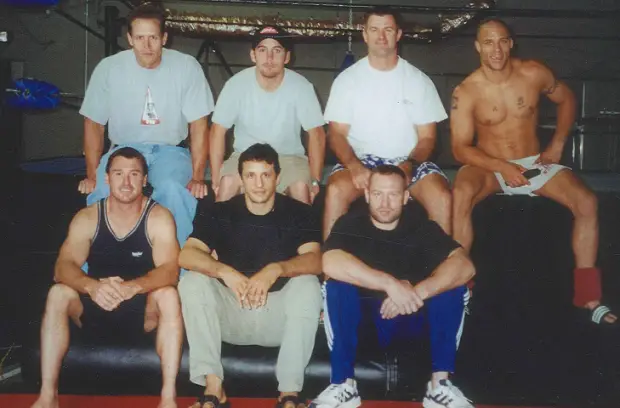
FNA: How long did it take you to get your Jiu-Jitsu black belt?
JD: I want to say it was probably five and half to six years. I was training a lot, I mean, there was a period there during the last couple of years where I really wasn’t working a lot, I was doing some coaching at the Machado’s, I was coaching at the Inosanto Academy, doing some seminars, doing some MMA refereeing. I really wanted to train, I was training twice to three times a day. Plus doing weights, riding a bike, whatever I could, because my eventual goal was to move back to Australia, so I was trying to do whatever it took to get there as quickly as I could. It was a real melting pot of great training partners back then, you had some really good guys. The Machado’s first black belt Bob Bass, who also wrestled in high school so he had a strong wrestling base, we had Joey Bass his brother, and a Brazilian kid Fernando Vasconcelos who later on became a World Champion, also Duda Castro. I would go to Mark Lyons’ house on a Sunday, who was a brown belt when I started there, and he would have an open mat, we would train again for however many hours, so I was training all week, along with going up to Gene’s cabin on a Saturday night. It was pretty much a seven day a week thing. Which probably wasn’t great for me because I wasn’t getting much recovery time, but when you’re passionate about something that’s what you do.
FNA: How many hours did you spend training with the Machado’s as opposed to training with Gene LeBell?
JD: In the end, it was definitely more with the Machado’s simply because of Gene’s availability. I quickly learned that they kind of frowned on me doing any of Gene’s stuff there. Gene was obviously big on legs, ankles and neck stuff and back then all that stuff was frowned upon in Jiu-Jitsu. I think it was the first Pan Ams when Jean Jacques Machado went for a straight ankle lock, and I remember the crowd booing him. I really had to coach myself to just try and do Jiu-Jitsu while I was there (Machado academy) and not incorporate a lot of Gene’s stuff, which is fair enough because I wanted to get graded on my Jiu-Jitsu. Then later on I was training with the wrestlers, Randy, Rico and Vladimir Matyushenko, Frank Trigg, Tom Erickson, Dan Henderson, I started to learn about that side of the game and tried to incorporate it into what I was doing. You’ve got these incredible athletes who are fighting in the UFC and at all these different events. At that very early stage, we were trying to figure out what MMA was, we had guys that were really good at wrestling, ok at boxing or kickboxing, or really good on the ground, but then it was about trying to make that transitional stuff between everything work, trying to make it fluid and seamless was always a challenge. Randy was a decent boxer, not a great boxer, and I’m sure he’d admit the same, but a decent boxer, he is obviously a great wrestler in both freestyle and Greco, so you know it was all about how to put those together, then transitioning to the ground and making him aware of submissions. In the beginning, it was about teaching him how to avoid the submissions mostly. That’s where Rico Chiapparelli was amazing, he was the most gifted wrestler that I’ve ever come across, he was so far ahead of his time in putting that team together, and also making them the most formidable team out there competing in those MMA events, because they were winning most things. They were probably the most well rounded at that time, because unfortunately Jiu-Jitsu people had that mentality that all you needed was Jiu-Jitsu which obviously came back to bite them later on because they weren’t cross training enough with wrestlers and stand up fighters and so on, and the sport continued to evolve, and like most things, if you don’t keep evolving you’ll just fade away or die out.
FNA: During the time that you were focusing primarily on your own training. How often were you competing?
JD: I didn’t compete a whole heap, at that stage there weren’t a lot of competitions in the states, I think the Pan Americans had just started, I remember competing in the first Pan Ams as a blue belt maybe, and I came up against Fernando Vasconcelos’ cousin from Brazil in my first match, he represented Brazil in Judo too, we had a pretty even match but I just remember losing on points, and that was my first taste of Jiu-Jitsu competition, it was all a bit of a whirl wind for me. I competed in the American Nationals a couple of times, I won that, and came runner up in that also. The Joe Moreira internationals later on, I remember coming up against Rickson’s number one guy in Brown Belt Open final, that was a bit of a controversial match, there was a bit of an uproar in the crowd and things like that, I got injured, good luck to him he was way more experienced than me and played the rules better than I did. I competed in the worlds as a brown belt, lost on points to the guy who got bronze in that one.
FNA: Were you ever interested in competing in MMA?
JD: Look there was probably a point where I was, but when it all that started I was a blue belt, the UFC had started, it was all exciting, but I knew I was no where near good enough, especially at that stage. And then around the time I started working with Rico and Randy and the guys, I might have been, I want to say Purple and then Brown belt. I guess there was an attraction in it for me, but the other side of it too was that at that stage I had a family, I was working full time. For me to dedicate myself to MMA just wasn’t feasible because I could see the time that these guys were putting in, and the sacrifice, and having a young family I probably wasn’t prepared to do it. I enjoyed the coaching and the training side of things more, so for me there was not that intense attraction for it. I loved being around it, trying to figure it out, and having hard sparring sessions. Doing that also pointed out the deficits in my own game, I was wrestling with a guy like Rico Chiapparelli who was an All American, NCAA Champion and a World Cup Champion, I couldn’t get close to taking him down. So I thought if I’m a purple or a brown in Jiu-Jitsu but I can’t even get this guy to the ground, what am I going to do? Pull guard? So I guess I was also a bit of a realest, knowing how far I would have to go, and I really hadn’t boxed or done kickboxing for so many years that I would’ve had to go back to the drawing board again to try to do any of that sort of stuff. That also gave me the upmost respect for the guys who were doing it, and cross training in all of that.
FNA: You have worked as bodyguard, who are some of the people that you have looked after?
JD: Numerous, probably the most notable have been Nelson Mandela, General Norman Schwarzkopf, who a lot of people probably won’t remember but when the U.S.A first went into Iraq he was in charge of the whole U.S military. Various actors and singers, Tony Bennett, Isabella Rossellini, Kylie Minogue, there’s been a whole bunch over the years.
FNA: When did you know that you wanted to teach martial arts for a living?
JD: There was no light bulb moment, I guess, I always enjoyed coaching but I also enjoyed learning, one of the guys I learned most from, was the guy I would go to train with on Sundays, Mark Lyons. We would talk about it a lot, sometimes we felt that when learning from the Brazilians, there were points that were missed along the way, and I know it wasn’t a deliberate thing on their part, but I feel like because they’ve done it from such a young age, and it has become such second nature to them, there were parts along the way that they would just miss. For us, we needed every little detail we could possibly get. When I was a white belt in Jiu-Jitsu Mark was a brown belt, so he was a great resource for me. He would break things down really well, I learned a lot from him, and I wanted to coach that same way. I knew I would want to break it down and make it as understandable and simple for people that I was teaching. Gene was also very good with that, he would speak from a mechanical point of view on how the joints work, and why you use this angle, or why the shoulder would dislocate because of this and that, why leverage may work here, where here it doesn’t work, things like that. And again, Rico, I mean I remember wrestling coaches would fly in to ask Rico one particular question on why their wrestlers were struggling with one particular takedown. He was just that good at breaking things down. His knowledge of angles was incredible; he then applied that to Jiu-Jitsu. So I was incredibly lucky to be around these people who had that ability to deconstruct everything so that you could understand an advanced move because they made it seem so simple.
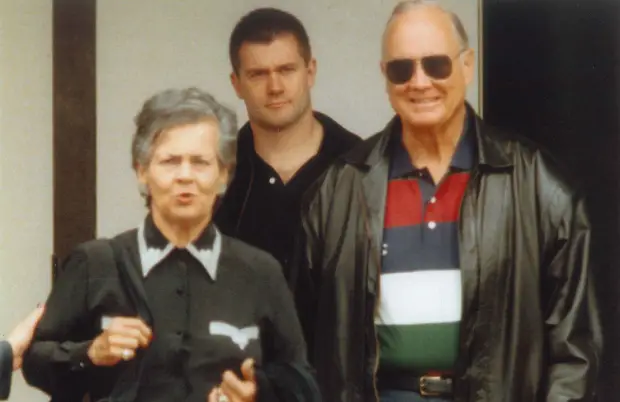
FNA: Who were your biggest influences, in relation to your style of grappling?
JD: Rigan, because we were a similar body type and he would use me a lot as a training partner for that reason, so my style of Jiu-Jitsu is very similar to his. Rico, obviously because he was my wrestling influence, I’ve never been around anyone that could move like him. And Gene, in terms of my style, it is an amalgamation of them, and what they were able to impart on me. Mark Lyons from a coaching point of view, and others as well, like Carlos Machado was a very good instructor, I learned a lot from the way he taught and broke things down.
FNA: Who were your biggest influences in relation to philosophy in training, and in shaping you as a man, off the mats?
JD: I’d probably go down a similar path to the previous question. I really look at it and think that I’ve been incredibly lucky to be in the right place, at the right time, around the right people. I had the opportunity to train with a guy like Rico Chiapparelli three to four times a week, I would coach him in Jiu-Jitsu, he would coach me in wrestling and then we’d play around and put things together. Someone as legendary as Gene LeBell, or being around Benny Urquidez and Bill “Superfoot” Wallace, or Randy Couture, Frank Trigg, Carlos Machado, Mark Lyons, all these guys that I’ve been lucky to be around, it really is like lightning striking twice that I was able to learn from these people. Without a doubt they’re all good human beings. Another one, would be someone like Dan Inosanto, no matter where you travel you never hear a bad word about Dan, he’s such a gentle human being, a great martial artist, great to talk to, when you get him away from the spotlight and he talks openly and honestly about different things that he’s seen over the years. Very generous with his knowledge and his time. I was lucky enough to teach at Dan’s Academy in Los Angeles, and also go to Dan’s house on a regular basis and have him as a private student of mine. He was humble, at that stage he was maybe late 50’s or even in his 60’s, his appetite still to learn and train and develop was incredible, for me he really embodied that true martial artist spirit and way of life.
FNA: We see a lot of “fake” martial artists getting called out on YouTube these days, have you ever had a run in with someone like that, who believed in their skill-set so much that they were willing to test it?
JD: No, I mean I’m pretty lucky that I’m the opposite of someone who is into social media, I don’t have Facebook, I don’t watch Youtube, I hear about this stuff from my students occasionally, but I never really see it. When I was at the Machado’s, I never once saw anyone come in and challenge the Machado’s. People came into train you know, like Frank Shamrock, or different guys from Japan. It was the same at Rico’s place at R.A.W (Real American Wrestling) they would come and train, everyone was very respectful. The only time I think I’ve ever seen people be a little bit ignorant more than anything was up at Gene’s cabin. I’ve seen Gene pretty angry at people, there was a couple of times when it was probably unfair because myself and maybe one of the other guys had set someone up. We might’ve said something like “when you roll with Gene you’ve got to go hard otherwise he won’t respect you” so then Gene would turn it up a little bit when it was his turn. But you know, I was at the Machado’s for a long time, I’ve never seen anyone come in and be really disrespectful.
IN TERMS OF YOUR PERSONAL EXPERIENCE, IN YOUR OPINION-WHO IS THE:
FNA: Best grappling coach?
JD: I cannot separate Gene and Rico for different reasons. I felt that Rigan was a really good coach when his head was right, there were times when Rigan was distracted with different things, as we all get, but when he was on he was fantastic. Carlos (Machado) was a very good instructor I felt, very detailed. But I don’t know, I’d have to say Gene and Rico probably.
FNA: Best striking coach?
JD: It’s been so long, Bill Wallace was very good, very technical. Other guys that I learnt from pre going to the states, guys like Dave Berry, Les Clarke. I was also lucky enough to do some sparring with another World Champion down at Benny’s, Pete Cunningham, who I inherited a great scar under my lip from.
FNA: Best Jiu-Jitsu practitioner?
JD: In his day when he was on, Rigan. There was a time there where I felt that Rigan was clearly the best guy in the world.
FNA: Best wrestler?
JD: Rico Chiapparelli.
FNA: Best striker?
JD: I don’t know, I’ve been rocked by a lot of people. It would have to be Dave Berry, and Bill Wallace cleaned my clock plenty of times, he was a heavy hitter.
FNA: Strongest?
JD: Would have to be probably Vladimir Matyushenko. He had wrists the size of the top part of my forearm, yeah he was incredibly strong. Randy was very strong as well, yeah, Tom Erikson, big and very powerful. But I remember Vladimir didn’t like to tap, and when I was lucky enough to get him, he used to tickle me instead of tapping. I remember years later Rico ran a grappling event, I think it was called L.A Sub X, there was a match with Vlady (Matyushenko) and Xande Ribeiro, you see Vlady go at him and basically just man handle him around the mat, and Xande is no weakling, but Vlady is just a very powerful human being.
FNA: Best athlete?
JD: Rico Chiapparelli.
FNA: Most naturally talented?
JD: Rico Chiapparelli.
FNA: Scariest?
JD: Gene LeBell.
FNA: Craziest?
JD: Gene Lebell.
FNA: Smartest?
JD: That’s a very broad question. It’d be Gene and Rico, I mean a lot of people don’t know that Rico Chiapparelli was accepted into Harvard University on a scholarship, which is only for probably the top 1 percent academically, but Rico still chose to go to Iowa because he wanted to wrestle under Dan Gable.
FNA: Funniest?
JD: Frank Trigg would like to think he’s the funniest, he never shuts up. Rico had a really dry sense of humour, and Gene’s sense of humour was always funny, so I’d probably have to say Gene.
FNA: Nicest?
JD: Gene is just a lovely human being, I call him uncle Gene, he is like family to me, every phone conversation the last thing he says to me is “is there anything I can do for you” that’s the kind of person he is. And he’s been taken advantage of over the years because of his humility and his kindness. Randy is a wonderful human being as well, very kind and generous with his time. It’s hard to separate, because once again, I’m not a religious man but I’d have to use the word blessed to be around all these people.
FNA: Toughest physically?
Gene.
FNA: Toughest mentally?
JD: Gene, Rico, Randy, all those guys that have that wrestling heritage are mentally tougher. You know, the big thing that separates Jiu-Jitsu from the other grappling styles is the guard, where you’re sitting back, in a way playing a passive position, where as wrestling is all about going ahead and imposing your will on someone else, cutting weight from a young age. You know, I remember reading a book on periodization by Tudo Bompa (PhD) who was a well-respected guy in terms of strength and conditioning. He studied a lot of sports, and the most balanced athlete for power, strength, endurance and so on, was a wrestler. Their mentality of having so many matches over a weekend, and it being so combative, seeing how they train even at a high school and university level is really unlike anything else. And I always had this idea of training Jiu-Jitsu athletes with that wrestling mentality, I mean that’s kind of how the sport has gone over the years anyway with MMA, it’s a hybrid type style. I was lucky enough to have great athletes in the early years of being here, like Cris Brown, and then some other guys who took to it very well, guys like Travers Grubb. But the mentality of training with me back in those days was tough, it was unforgiving and unrelenting, it was more of that wrestling mentality. And they became very good competitors. You know what, they probably would have been good competitors with whoever coached them, they were naturally good competitors. I’d like to think that I probably helped a little bit in making them a little bit better.
Training Philosophy:
FNA: To get into peak physical condition for competition, you obviously have to train extremely hard. However, this kind of training wears the body out, how do you balance longevity with reaching your peak? Can you balance them?
JD: Yeah I think you can, I mean if you look at someone like Randy, you know I don’t think there’s been many other examples of longevity in both wrestling and especially in MMA as someone like Randy. Randy looks after himself really well, obviously he’s probably got really great genetics, but he is smart with his training, he’s consistent with his training, he always balances his training with weights so his joint stability and structures all remain strong, he gives himself enough time to recover. Randy’s an engineer, he’s no idiot, he studies this stuff and he knows what’s right for his body. So I think you can. I probably wasn’t smart with it, I don’t think the way I trained was smart, I would get injured and just keep training and go through it. Which I know a lot of people do, and there’s a balancing act, because you don’t want to just rest every time you get a niggling injury either, that doesn’t teach you the mental toughness that you need to persevere in sports like Jiu-Jitsu, Wrestling or MMA. If you took time off for every little injury you’d never train. So it really is a balancing act, knowing the difference between being hurt and being injured, and being able to push through some of those pain barriers. And while I said that I’m having surgeries and all that, at the end of the day I’m still training, I’m still doing what I love. I can’t do it to the ability that I’d probably like to do, but that’s just a product of getting older anyway.
FNA: Xande Ribeiro says that in a full year of training, he would only get tapped a couple of times, and that is usually by his brother, Saulo. Garry Tonon says that he taps multiple times in every training session; because he is constantly putting himself is bad positions and trying new things. They’re both world champions, with contrasting philosophies. What are your thoughts?
JD: Yeah it’s a tough one, this is something that I think about all the time. I always encourage my guys to put themselves in bad positions, especially if they’re working on specific things. And you learn a lot by tapping. Both of the guys that you spoke about are great competitors and great athletes, both very, very good at what they do. So I don’t think there’s a right and wrong. I think if Garry is putting himself in those bad positions so he can try to work out of them and his ego is in check to where he doesn’t care if he taps, and he’s getting accustomed to being in those positions, I think that’s a great philosophy to have. The flip side of that is Xande where he protects himself to the bitter end, not put himself in those bad positions especially against the higher belts I’m sure. He is training a different aspect of the art, where he knows before he gets put there, not to get there, so he doesn’t have to play out of too bad of a position at any time. He’s pre empting what’s going on, playing that sort of chess game of where he wants to be in certain positions and so on. It’s a really tough one, they’re both interesting philosophies, and I don’t think there’s a right or wrong, they’re just different, one is going to suit one personality type better than the other.
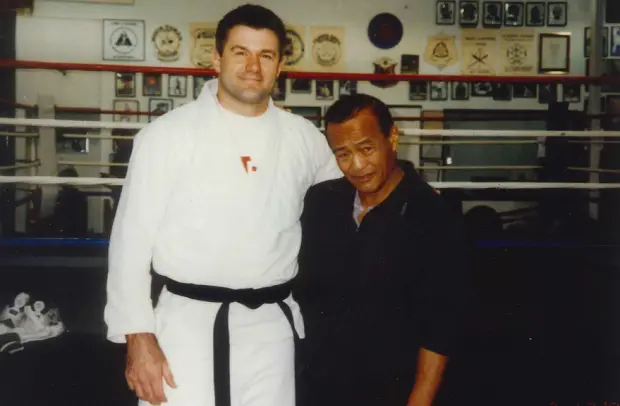
FNA: What do you think of the general standard in Jiu-Jitsu these days, as compared to when you were coming through the ranks?
JD: I’m probably a little bit biased, I don’t like all the advantages, and the non self defence aspects of Jiu-Jitsu. I think Jiu-Jitsu when we were coming through was a lot tougher, but maybe not as technical in a lot of ways. I’ve heard guys like Combrido talk about it, there’s stuff that was around thirty years ago like Helicopter Guard, when guys do the same thing now, they call Berimbolo or whatever they’re calling it. I guess I’m probably a bit more old school where I want my Jiu-Jitsu to work Gi, No-Gi, if someone is striking, and so on. For me the sport aspect as it is these days doesn’t appeal greatly to me, in the sense of I don’t really want to coach my guys to go down that path. But I have no problem coaching them on how to counter all of those different things, and to at least understand those certain things. That might be a bit of a head in the sand mentality, I’d like to think what I was doing when I was coming through still has purpose, meaning, and a validity to it. When I watch Roger Gracie I don’t see him do a lot of fancy moves. I remember watching guys like Leo Vieira come through or guys like Fernando “Terere” Augusto, Nino Schembri, all these guys that came through that were so aggressive, and so exciting to watch, even Marcelo Garcia and the way he changed the game. But for me, those sort of guys during that period were to me, what Jiu-Jitsu was, but again, I probably am biased because that’s what I grew up with. If I grew up with Jiu-Jitsu now, maybe I’d have a different outlook on it. At the end of the day, it’s all valid, it’s all good, it’s just different. I just don’t like advantages, I like clear cut points, I like submissions, I like pressure. The same way there is criticism on the way that Judo has gone, there’s a lot of things in Judo that you can’t do anymore, quarter points, almost quarter points, that means that it loses the essence of what it’s about, or what it was for me anyway.
FNA: What does it take for you to award a student a blue belt?
JD: I guess it’s definitely time served, consistency in training, the ability to deal with pressure. I’m probably known for reasonably tough gradings. I didn’t do any gradings coming through Jiu-Jitsu, you were just surprised one night by the belt. The only belt that as given to me at a ceremony as such, was my black belt. When I received mine on the same day that Mark Lyons did, along with a couple of other guys. For me, especially if you don’t compete, I think it’s important to be tested in front of your peers, dealing with pressure. Having a base fitness level, having a good knowledge of technique but be able to do those techniques under pressure. It probably takes a little while, because sometimes I look at the standard and I think in a lot of places the standard gets dropped for whatever reason, whether it’s money or wanting students or sheer numbers on the mat. And you know, I never begrudge anyone who’s making money from what they love to do, but I’d like to think that there’s a balance that you can strike between making a living and having good quality and producing good students. At the end of the day when I’m not around anymore, or can’t coach anymore, they’re the ones that carry on my legacy, they’re always going to be a refection of me. I don’t want to ever be known as someone who gave out a cheap belt to someone who didn’t deserve it, I want to know that my guys can go to any place in the world, and wear their belt with pride. There would be nothing worse than wearing a coloured belt into a gym and having lower belts dominate you. My legacy part of it is really important, if that means that I end up having however many less students because I can’t be everyone’s friend, then so be it. At the end of the day, first and foremost I’m a coach, I’m a friend after that. I mean, I’ve lost people because maybe my standards were too high for them, or they could get a belt easier somewhere else. I realize that it’s emotionally hard to take for people. That’s the way I came through, the standards were always like that.
FNA: Catch Wrestling is somewhat of a dying art, how much catch did you learn from Gene LeBell?
JD: Well I guess all of what Gene taught, you could describe as Catch. He would talk about the old days when they were coming through, the places they’d train and the people they’d train with, the shows they would do on the road from town to town, and how tough the training was. I was lucky enough to be a member of The Cauliflower Alley Club, Gene got me into that. You used to get a little bronze pin for your suit, you’d have to go in a suit and tie, because all the old guys liked to dress up properly. I had this Cauliflower Ear pin that I had from the club, the ear was actually modelled off a guy called Mike Mazurki. It was all old school pro wrestlers, boxers, there were some honorary people like Sylvester Stallone, I got to meet guys that were legendary in the old pro wrestling ranks, guys like Lou Thesz. They were all big brutish men with big hands, but such lovely people. But yes, Catch is definitely a dying art, because it is very difficult to train, it’s probably not as sexy compared to Jiu-Jitsu or other things. I probably don’t do enough of it, and probably forgotten a lot of it, it’d be good for me to rekindle a lot of that stuff, I try to teach it when I remember it, and pass it on to my students. But a lot of it has really fallen by the wayside, which is really sad, because a lot of it is incredible.
FNA: How effective is Catch compared to the other grappling arts?
JD: To me, all the grappling arts are effective in different ways, I remember talking to Gene about different things, talking about the old days, he would learn from guys like Ed “The Strangler” Lewis who would do things like triangles and all that sort of stuff, but it wasn’t called the guard, it was called foot and leg control, this is before Jiu-Jitsu became known, that they were doing all that sort of stuff. Gene always had the opinion that this was nothing new, because wrestling had been around for so long. I remember Gene talking about passing the guard, and his philosophy was; why do I need to pass the guard when your leg is right there. So he’d snap your leg, or your knee, or your ankle, or snap your hip, because it was right there, he’d say; I don’t need to get to side control because you’re already giving me part of your body. He was always of the opinion that whatever he could do to your arm he could do to your leg, because they are similar joints, one is just a bigger version. A lot of that now has come to prominence, with all the legs and ankles by the likes of guys like Garry Tonon and all those sort of guys, John Danaher is really getting his guys entrenched in all the leg stuff, but Gene had been talking about this for years, you know, so it’s really great to see that stuff has really taken off because that’s a whole side of the human body that was somewhat neglected before in terms of the science of submissions.
FNA: Tell us about your club?
JD: I’ve had the new gym now for two and a half going on three years, the new gym that I started years ago, Extreme, I got out of. It was under different ownership, it just wasn’t going in the direction that I wanted it to go, in terms of the standards and different things, so I started my own. I never wanted to use my name, because I always felt that would be doing a disservice to all the coaches that imparted their knowledge to me. Me calling it John Donehue Jiu Jitsu and MMA was simply a way of saying that I’d separated from my last gym. But it’s never John Donehue Jiu Jitsu, it’s always what I’ve learnt from Rigan or Carlos, or Gene, Rico, or Randy, it’s them who have made me into what I am, I felt kind of silly calling it John Donehue Jiu Jitsu. So yeah, we’re ticking along nicely, the culture we have is fantastic, we have a pretty strict no dickhead policy, the culture is driven through the students as well, they’re a great group of guys and girls, who love to train, love being around their second family, we’ve got boxing classes, Muay Thai, Wrestling, MMA, Ultimate fitness, Jiu-Jitsu for kids, Muay Thai for kids. You know you asked a question before about it feeling like home, when you see the kids classes with the parents here, you see the adult students who come in four, five, six times a week, then the ones that come on Sundays to train, it’s fostering a really great culture of good people. I guess part of what I try to impart, apart from the grappling stuff, is that good culture, being a good person to the people around you.
FNA: How often, and which classes do you personally teach?
JD: I teach all the fundamentals and advanced classes during the week, except for maybe one night, I try to have one night off because I’m also finding a balance between the other stuff that I do with the professional teams. I enjoy teaching the fundamentals classes and advanced classes, I love seeing what questions they have, or watching their progression, I think I get more out of that then I probably would from competing, or even when I was learning. For me, and I know it’s probably common place for most coaches, the thing you get most out of coaching is seeing the guys that maybe aren’t the most naturally talented or naturally gifted, but get themselves in shape, and really start embracing Jiu-Jitsu and grappling, seeing how they develop, what you can do, how you can mold someone like that. Because a talented athlete can go to pretty much any coach and do well, because they’re talented or they’ve got the drive, it’s really the ones that maybe don’t have those natural attributes that are really good to see their progression, it’s really rewarding. That’s not to say that you don’t want to see the other guys excel, of course I do, I want to see everyone excel.
FNA: Your Jiu-Jitsu timetable includes as many gi classes as it does no-gi. Why is it important to train in the gi?
JD: Well I mean Jiu-Jitsu was designed with the gi in mind obviously, I think the Gi is really important especially in the early stages, because it tends to slow things down, and it gives you more time, it also places you under different threats of chokes and so on. You probably can’t get away with stuff as easy as you can with no gi, for me it’s important to strike a balance. If someone wants to specialize in one or the other later on then so be it, but I think the best example of that was when I was coaching a really good wrestler Cris Brown, he was getting ready for an ADCC comp, he didn’t want to, but I threw him in the Gi, just to slow things down for him, let him stand up while I’m pulling the gi down, let him get caught up with a bit of friction, it was more just to open his mind to possibilities, and then transfer that to the No-Gi realm. Being a wrestler, he absolutely hated the gi, but eventually learned to embrace it, and he could then see all the things that it offered.
FNA: How long are your classes? How are they structured?
JD: All the classes, bar the Gene LeBell competition class, are one hour. For the fundamental classes it’s generally a ten minute warm up, a twenty to thirty minute drilling period, the last fifteen to twenty minutes is free training. For the advanced classes, a lot of the guys will double up, for warm up we might do some rolling, then we might drill a technique or go straight into competitive rolling under a particular situational, or starting in a specific position, then we’ll have time for questions. We do more specific stuff for the more advanced players. The Gene LeBell competition class is two hours long, it’s our toughest class of the week, that’s why it’s the least attended. But, when students do attend they see their games progress far more quickly than anyone else at the gym. The first thirty minutes is devoted to tough conditioning, then the next thirty minutes or so is for drilling or working some of Gene’s old school stuff. The last hour is competitive rolling, it’s a pretty tough night.
FNA: Why is it important to drill?
JD: There’s an old saying, repetition is the mother of skill. I strongly believe in that, so you know that what you’re doing is correct and you get that sensitivity. Drilling never replaces free training. Gene would never teach me the Judo Kata, which you were supposed to know if you wanted to get a Judo Black Belt, I remember when I went for my Judo black belt, and Gene didn’t believe in it. So when I went for my grading, he was arguing with them about it, they asked to see the Judo Kata, which I didn’t even know. He basically told them; no he’s not doing that. He strongly believed that the time you spent learning a Kata, you could be getting better from sparring, because the Kata really is like drilling against nobody.
JD: I think drilling and repetition is incredibly important, so that the move becomes natural and seamless. You know, Dan Gable has coached a lot more people and is a lot better coach than I probably ever will be and his theory was to drill something a thousand times before even thinking about trying it in competition. As good as he is, and as good as he was as a competitor, I’d probably defer to someone like that.
Coaching:
FNA: You’re renowned for being an exceptional teacher, UFC fighters like Frank Trigg and Randy Couture, are amongst the many that have praised your teaching ability. Have you had any formal training in teaching itself? If not, how did you learn to teach so well?
JD: No, I guess I probably try to relate my teaching to the way I learn. To try to break things down as much as I possibly can, to make things as simple as I can, probably from an amalgamation of the highlights of people I worked with, like Gene, like some of the Machado’s, like Rico. The way I like to learn, is to have every possible detail broken down, in its simplest form to make it easy for everyone to understand. Rather than just teaching the technique itself, I try to teach from a conceptual basis, so that students actually get a concept of something, or understand the mechanics of why they’re doing it a certain way. I think that’s important so the student has a deeper understanding, then one day when they’re passing it on, they can explain the reasons behind a technique. I also think it’s important to ask questions.
FNA: You have achieved some amazing success as a grappling coach. One of your students, Travers Grubb, was able to submit a 3rd degree Black Belt at the ADCC trials when he was a purple belt. Another one of your students, Cris Brown, beat the legendary Renzo Gracie at the ADCC in 2001.
JD: Well obviously Cris is a great wrestler, a 5 time Olympian. He ended up going against Renzo in his first match. Renzo is one of the greats of all time, we were lucky to get a win cause Cris stuck to the plan that we came up with, it was a really good match. Cris at that stage was a white belt, he didn’t get his blue belt until maybe another year and a half afterward, he is now a black belt with a school in his own right.
FNA: What was the game-plan going into that one?
JD: So I knew that Renzo was a great competitor, and a really smart fighter, you know he was one of the rare Jiu-Jitsu guys who was open to learning different things, Rico Chiapparelli had been over and helped him with wrestling in New York for a period of time, and spoke really highly of him. Renzo was always that guy that would smile, shake your hand and have a chat. Renzo was also a very proud fighter, not the sort of guy that likes to pull guard. So our plan going in was to utilize the point system of ADCC. Try to stall as best we could while keeping it standing for the no points period, at that stage, Renzo might have pulled guard, but my fingers were crossed that he wouldn’t because his personality was that type, he was a very proud man, and he had decent wrestling skills as well, so I was banking on him not pulling guard. I felt like Cris’ wrestling skills would get him across the line during the points period. So we got to Cris’ strong suit which was a collar tie and breaking the guy down, he used that to good effect and Renzo luckily didn’t pull guard in the early stages, I think it might have been a different story if he did, knowing how skillful Renzo is. But once the points period had started, Cris really went into wrestling mode, he ended up getting a single to a double leg takedown, and got the points for that. He had learned enough through our training, to be able to keep his distance from Renzo. That was our game plan because Renzo was so dangerous in the guard. We basically played the rules and won the match based on those takedown points.
FNA: What are the fundamental differences between teaching a class and actually coaching people?
JD: I guess I don’t look at teaching a class as actually taking class, I’d rather say coaching. When you are teaching a class, you will always have students who have different challenges, whether it be physical or mental, or whatever it might be, so I definitely like to assume more of a role of a coach. That’s always my first priority to my students, as a coach. I guess it’s the same word but in a different way, you go to school and you learn from a teacher, but probably your best teachers at school were I guess more of a coach as well, because they understood you a bit better, your strengths, your weaknesses, they could get you a bit better at a subject than maybe another teacher.
FNA: You’ve trained with/coached athletes from a broad range of sports. In your experience, generally, which sport produces the best athletes?
JD: For me, the best athletes have been probably in wrestling, that I’ve dealt with, as an all-round athlete. Aside from that, I’d probably go with the NRL athletes, because most of them are very well balanced, in terms of strength, power, speed, agility, and endurance.
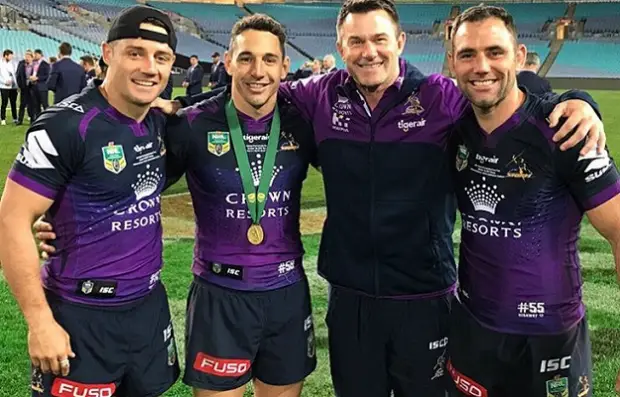
FNA: How hard were guys like Randy Couture, and Dan Henderson training back in the day? Compared to the NRL and AFL guys?
JD: They train differently; I think all of the different sports train hard in their own specific way. You could have someone who is an amazing marathon runner, but they come do Jiu-Jitsu or wrestling, and they gas inside of two minutes because they’re using a whole different set of muscle groups, moving in a whole different way, and their mind is working overtime, because there are so many different things going on that they are not accustomed to. You know, it’d be the same for a Jiu-Jitsu guy or a Wrestler who was asked to run in a triathlon.
FNA: You are well known for being a tackling coach for AFL and NRL teams over the years, how did that all come about?
JD: Originally it came about when I moved back from the states. Craig Bellamy (Current Melbourne Storm Head Coach) was an assistant coach at the Brisbane Broncos, he was moving back to secure a job with Melbourne Storm. I had previously done a few weeks at the Melbourne Storm, I did a few sessions but it wasn’t that serious. Then Craig got my number from Chris Haseman (Australian Mixed Martial Artist) who knew I was moving back, Craig was looking for someone down here, he was interested in what I could possibly offer, and I was interested in doing it more seriously than what I had done in the past with the previous coach. Craig is a very dedicated, intense, sincere sort of person, and Coach. I’ve been there ever since he’s been there, so now this is my sixteenth year there.
FNA: Which professional sports teams have you coached? And in what capacity?
JD: Obviously Melbourne Storm, I’ve been lucky enough to work with the All Blacks, several teams in England, Wigan Rugby League Club, Hull FC, Hull KR, Northhampton Saints, and most of the AFL teams maybe barring four or five, within a tackling and defensive capacity.
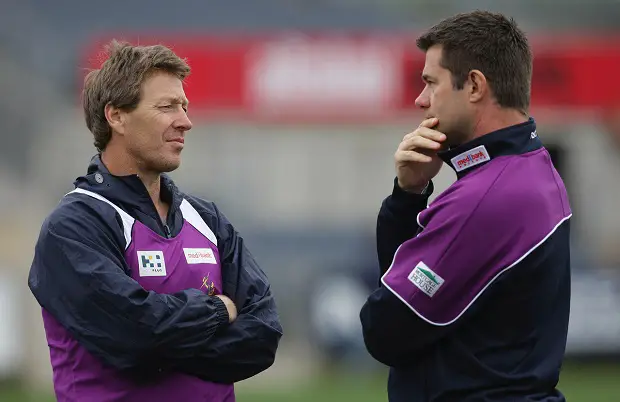
FNA: When coaching AFL or NRL teams, how do you balance hard training, with keeping them fresh for important game days?
JD:That’s usually not done by me, they have a group of guys who are a lot smarter than me in that area, so I’m generally given a specific time to work with them, generally we plan what we’re going to do each session. Whether it’s going to be lighter on the legs, or more upper body, or maybe specific things that they need going into the game. That’s very different to preseason, which is a lot longer and tougher, because obviously, there’s no games at that stage, so we can really drill down on stuff, and push the limits of the athletes in that time frame.
FNA: What methods, and/or specific exercises cross over from grappling, to Rugby League, or Aussie Rules Football?
JD:A lot of the basics in terms of contact, moving the body, footwork, being in close, getting rid of space. Not so much with the Jiu-Jitsu stuff, more I would say with the wrestling. It was a real eye opener for me when I first started with the Storm, I really had to get my head around what they were after, and the game itself. So we spent a lot of time trying out different things and there were plenty of things that just didn’t work. I think a lot of people make the mistake when they do go to teams, of trying to do the drills which make someone a good wrestler or good Jiu-Jitsu practitioner, but the players aren’t necessarily going to be doing that in a game of Rugby League or a game of AFL. You have to get very specific about the game they actually play, which in itself takes a lot of work. So you really have to adapt what you’re doing to make it specific otherwise it just doesn’t work.
FNA: What are the major differences between training grapplers and training NRL or AFL players?
JD: The biggest thing is the contact, we do a lot more work on footwork with the AFL or NRL players, and obviously, the contact is very different. I’ve never been around a sport that has as much contact as Rugby League, I believe it is the toughest contact sport in the world. The pace they go, and the way they collide is incredible, I don’t know how they pull up and do it a week later. But the mental toughness and physicality side of the training is very similar.
FNA: Do you prefer to coach hobbyists, or professional athletes?
JD: I really don’t have a preference, I think we all start out as hobbyists, especially with the grappling stuff. So, when someone learns something that can possibly change their life in a positive way, that’s very rewarding. Dealing with professional athletes who are trying to win every week and have a lot of pressure put on them, and they need to find that little bit extra or have that little advantage over someone, is also rewarding. You know, in some ways a professional athlete can be easier, because they’re getting paid to be there and you can do what you want to do with them, sometimes when the training gets a bit more difficult for hobbyists’ they can struggle a bit. But, both are equally rewarding.
FNA: When Coaching, which old school methods do you still use? What changes have you made?
JD: I’m still pretty firm in the belief of training hard, physically and mentally. I think mental toughness is really important, especially for guys who are competing, no matter what sport. Just the attitude of trying to always push a little bit harder and get a little bit further as you go on in your journey. I remember Randy Couture was talking to me at some stage, his attitude was try to get one percent better with every training session, and I use that quite a bit. I think it’s a valid point. It’s like you don’t go out there and try to be forty percent better the next day, just try to get 1 percent better each time, and if you train four times a week, hey that’s four percent better. So, at the end of the month, maybe you’re sixteen percent better, which actually sounds like quite a lot. If you set yourself the goal of just trying to get a little bit better in each training session, I think that’s very important.
FNA: Finally, if you could even imagine it, what kind of a life would you be living if you hadn’t have discovered martial arts?
JD:I don’t think I’ve ever really thought about it. I don’t know, things like medicine always intrigued me, being a surgeon, even though I’m probably not smart enough, I would’ve liked to have tried. Something that would keep challenging me, that’s what I find enjoyable about Jiu-Jitsu or Wrestling, there’s always something out there that’s new, and everything is always evolving, you would be kidding yourself to say that you’re a master of it. I get bored very easily, every student in the room moves a bit differently than everyone else, so even though the foundation or the principles are still the same, the thought process of how you need to adapt to different people in the room, or what belt they are, it’s always a little bit different. You know different techniques or different variations on techniques, even when you get older or have an injury, your game has to change and adapt.
